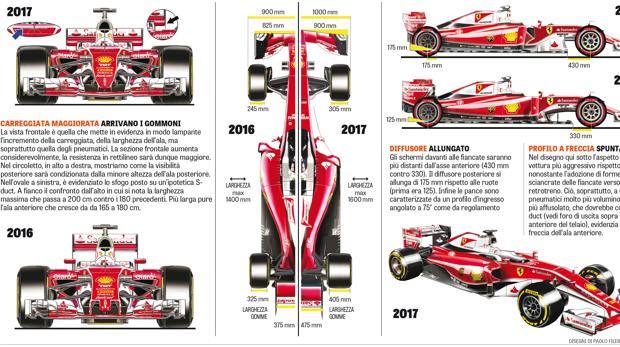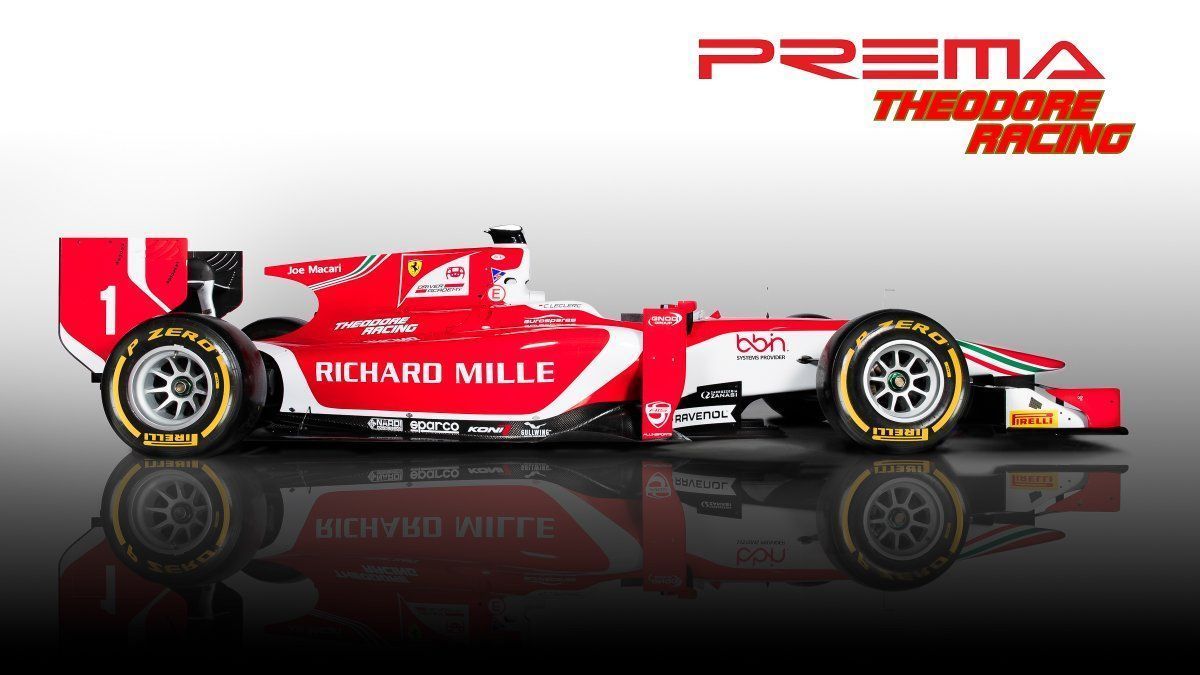Znaš i sam da kod Ferrarija ništa ne iznenađuje
A jebemu pa nisu baš toliko mutavi, dva dana manje testiranja je nekih cca. 300 krugova, puno to znači, a moramo nabijati kilometre

A ko će ga znati...bilo je raznih glasina i što sve ne. Svakako se na usporenim gifovima mogla vidjeti razlika između prvog i drugog testa u ovjesima tj. koliko se bolid naginje na kočenju (ono o čemu je Binotto govorio, a i vozači) i da je imao drugačiji balans.Har Kl je napisao/la: 17.12.2019., 08:51Ma i mislio sam na prvi test. AMuS je izmjerio da je prednost Ferrarija bila 0.7 sec koliko se sjećam. Nije to neka razlika s obzirom da se radilo o predviđanju.Ferrari je napisao/la: 16.12.2019., 22:18PRVOG TESTA...ne i drugog.
I to nije bilo daleko od istine uopće. Mercedes je došao sa novim bolidom na drugom testu i bio vidljivo već tada skoro jednak u kvali krugu, a u simulacijama je bio bolji od Ferrarija sa dobrom marginom. Također su bili puno brži u trećem sektoru od Ferrarija (kako to...eto...) da bi se sve ovo ispostavilo kao čista istina na kraju...+ što je Mercedes bio pouzdaniji (još nešto što se potvrdilo kroz sezonu)
Ferrari je očito mislio da skrivaju više od Mercedesa (naivno) i nisu na vrijeme prepoznali mane bolida tj. mislili su da će ga optimizirati kako budu išle utrke. Na kraju su nakon 3-4 utrke shvatili da je koncept u potpunosti kriv i obustavili su cijeli daljnji razvoj bolida i radili skroz novi program.
Nakon drugog su čini mi se rekli da je prednost 0.2 sec.
Sad ozbiljno ...
Da li je moguće da vam je novi ovjes davao toliku prednost, a morali ste ga skinuti nakon prvog testa, jer se polomio na Vettelovom bolidu? I generalno sam stekao osjećaj da vam je ovjes ove sezone kao od stakla. Pogotovo u zadnjim utrkama sezone, kad ste čini mi se opet nešto kombinovali sa ovjesom?



Ali što bi time dobili, osim potrebu da gube vrijeme na promjenu sjedala. Samo jedan bolid smije testirati.Frantic je napisao/la: 17.12.2019., 19:56`Oćemol` bacit` kakvu okladu, da li će se sjetiti da postoji i ta mogućnost?Sarma je napisao/la: 17.12.2019., 19:35 Ništa nije sigurno, a pogotovo nije trollanje
https://m.speedweek.com/formel1/news/15 ... -Bahn.html
Budemo vidjeli, to bi bilo vrhunski i mnogo korisno, pogotovo ako dođu sa dvije različite verzije, znači prvi test - prva verzija i pouzdanost, drugi test - druga verzija, nešto slično poput Mercedesa ove sezone...
Sad kad su oba testiranja skratili za dan, nadam se da će staviti OBA vozača sve dane da voze, a ne jedan dan Seb, jedan Leclerc...



Osim mehaničara - svoju pauzu za ručak.CrashOverride je napisao/la: 18.12.2019., 14:44 @wapi
To se zamjeni kroz pauzu za rucak, nista nitko ne bi gubio..
A dobitak ne vidi samo onaj koji ne zeli vidit.. Siguno bi se odradila veca kilometraza sa oba vozaca u svakom danu..


Ahahahaha, oplakahCrashOverride je napisao/la: 18.12.2019., 15:06 Koliko ih tocno mora ostat da zamjene sjedalo i kakav je to tocno problem glede rucka, mogu otic poslije..
Obzirom da je Ferrari u pitanju, razlog je vjerojatno sto hoce da svi zajedno idu na rucak , da netko ne bi uvrijedio..
Gledajci sta Mercedes radi, obzirom na tesko samaranje grida, za zakljuciti je da je njihov sistem bolji..










Front, modified suspension (više - manje isti ovjes kao i 2019)The presentation of the new Ferrari is a month away, the car will be presented in Maranello and will move the first kilometers to Barcelona on February 18 as part of a "filming day", one of those days allowed by the regulation to carry out promotional shots but which in reality they are also used for small tests. In fact, twenty-four hours later, always at Montmelò, the collective tests of Formula 1 start with Charles Leclerc and Sebastian Vettel taking turns at the wheel. And there you will begin to understand where this machine designed on the previous line (SF90) can go, but with interventions aimed at correcting its defects and limits. Reliability and lack of downforce were the main problems. For now let's call it "671" with the name of the project, for the final one we have to wait. Matt red paint confirmed.
Shorter side inletsIn the last year before a major regulatory change, revolutions cannot be expected. The new Ferrari will be a clear evolution of the SF90, born with much more aerodynamic load to make the tires work well. Especially in the race, where the ability to repeat the performances obtained in qualifying was lacking. The front end tip will not undergo major changes in concept but will continue to be of the type used at the end of last season. As well as the front suspension which can still count on changes mainly in the kinematics. It seems that the path of the third fully hydraulic element like Mercedes and RBR has not been worked out. The third element should continue to be rather traditional even with hydraulic control as in the 2019 season.
Shorter wheelbaseAs for the front wing, the concept of "outwash" will continue to be exploited (pushing the air outside the front wheels) even if a more charged external area will be chosen to try to make the most of the Pirelli tires that we remember will be equal in terms of compound and construction to those used in the past season. This will allow Ferrari to unload a heavily loaded area, aerodynamically speaking, on the SF90 or the bargeboard area. The central part of the car should resume some concepts seen on the Red Bull RB15. The cooling inlet of the radiators will remain positioned at the top, as well as in the last three single-seaters of the Italian team, to be able to obtain an important flaring of the lower part of the belly, essential for generating a "downwash" effect that serves to improve the car rear performance. The sides will be shorter with a "Coca Cola" area that is always very tight.
Engine: not just performanceAt the rear, a lot of work has been done on the car floor which will have to manage a rake structure that is still quite strong to try to significantly increase the aerodynamic load in the rear area of the car. Rear instability that put the four-time world champion, Sebastian Vettel, in difficulty for much of last season, who instead prefers a very precise car in that area. On the contrary, a more "unstable" rear end helps Charles Leclerc's driving style. The Monegasque driver is in fact very skilled at putting the car as straight as possible before the apex of the curve and therefore does not mind the oversteer at the rear. Going back to the Ferrari 2020, the wheelbase (the distance between the front and rear wheels) should be slightly shorter than that of the SF90, following the concept brought to the track with the SF71H and especially with the SF70H. Consequently, the rake angle will be slightly increased to maintain certain levels of the rear height of the car.
https://www.corriere.it/sport/formula-1 ... pale.shtmlThe aim is to maintain the lead in this area, improve significantly in the fuel consumption area and prepare developments capable of matching the latest developments of the Honda power unit which has made great progress. The 2020 engine has been revised in architecture, in particular, the turbo V6 will use new pistons while on the hybrid part interventions have been made to increase energy recovery. Ferrari 2020, by design choice, will lose maximum speed on the straights to gain cornering. For this maximum concentration on reliability, which took away very heavy points last year, and on fuel consumption that limited the performance of the SF90 in the race. The tests at the benches were intensified, as were the control procedures,






